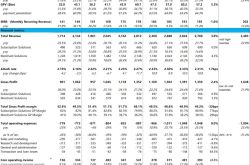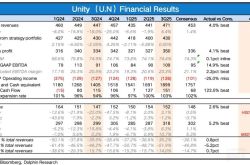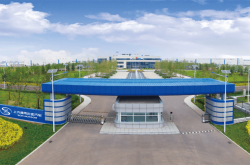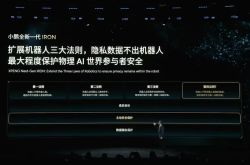DeepSeek: A Catalyst for National Progress or a Mere Spectacle?
![]() 02/05 2025
02/05 2025
![]() 492
492
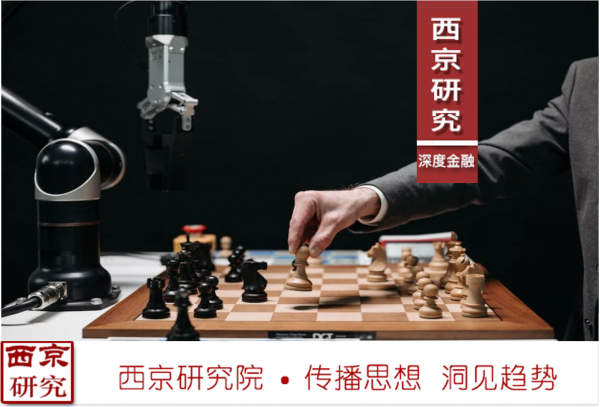
This marks the 807th article published by the Xijing Research Institute and the 748th original contribution by Dean Zhao Jian. For the latest insights and analyses, kindly join the Xijing Research Institute Research and Communication Group.
The sudden emergence of DeepSeek has sparked two distinct perspectives. One is the "National Fortune Theory," where the East buzzes with excitement and the West is taken aback. Many believe it signifies the comprehensive rise and surpassing of Chinese AI over the US, the bursting of the US stock market bubble propped up by Silicon Valley, the impending decline of the US economy and technology, the redistribution of global capital, and the further entrenchment of the "rise of the East and fall of the West" trend. The era of "Eastern greatness" has arrived.
The other perspective, the "Farce Theory," views DeepSeek as a software-level scandal akin to the "Hanxin" incident or a repackaged ChatGPT. This viewpoint often cites sentiments like "science requires grounded and diligent accumulation" and "taking shortcuts cannot defy physical laws," arguing that replacing billions with millions—a feat of leveraging minimal resources for maximal results—belongs solely in Chinese martial arts novels. It is deemed not science but metaphysics, a "martial arts dream" in the collective consciousness of "Eastern greatness," and a passionate outburst after long suppression and domination by Silicon Valley in this AI wave.
First, let me share my personal view. I believe that once the truth is revealed and the dust settles, it will likely fall neither entirely within the "National Fortune Theory" nor the "Farce Theory" but somewhere in between. It represents a significant innovation by latecomers using AI itself as a tool, perhaps a backfire for those who nurture rivals, but not a revolution. Alternatively, it could be a case of "learning from the enemy's strengths to defeat them." To provide a possibly inappropriate analogy, it resembles a "Battle of Pingxingguan" in the realm of AI, where China, comprehensively suppressed by the US, capitalized on the enemy's arrogance to launch a surprise attack, causing widespread shock in Japan's political and social circles and invigorating the Chinese people, yet insufficient to alter the overall battlefield dynamics. Instead, it will provoke a more vigorous counterattack and sweep by the "Japanese troops," ushering the War of Resistance into its most challenging phase. Recent events, including DS's downtime after being attacked, OpenAI and Microsoft's in-depth investigation into Huanshan's chip imports, the US Navy's ban, and product removal from shelves in countries like Italy, indicate that the "counterattack" has already commenced.
Let me further elaborate on my viewpoint. If it were the "Farce Theory," how could it have elicited such a massive reaction in the US, with Musk nearing hysteria, Trump furious, Huang Renxun panic-stricken, and numerous Silicon Valley tech giants astounded? The most compelling evidence stems from the capital market—after the collapse of AI leader NVIDIA, it continues to fluctuate at the bottom, with its stock price and market value yet to recover. If DS were a farce, NVIDIA's shares would have rebounded robustly to their original highs long ago. DS's open-source architecture has been thoroughly examined, and its early academic papers have withstood scrutiny. Moreover, Huanshan did not spring up overnight but has accumulated knowledge and experience for nearly a decade.
If it adhered to the "National Fortune Theory," firstly, DS has not achieved a disruptive technological revolution akin to ChatGPT. It is not a creation from scratch but more likely a model distillation technique. Secondly, DS still harbors flaws, such as when asked what it is, the answer is actually GPT. Thirdly, in the face of questions and accusations, DS has yet to provide sufficiently convincing responses. Furthermore, in recent days, there have been notable downtimes, and the quality of answers has deteriorated, with many responses dating back to before October 2023. Fourthly, there are numerous legal and international rule-related issues, such as personal privacy protection.
Therefore, the truth most likely lies in a few fearless young Chinese individuals at DS, capitalizing on Silicon Valley's arrogance and fanaticism, alongside the "magic" of AI itself, to conduct a "process optimization" of the AI algorithm industry chain. After years of reliance on NVIDIA's CUDA computing power platform with GPU accumulation and surging US dollar capital, artificial intelligence is bound to harbor numerous flaws and bugs. Just as when the Japanese army invaded China, boasting about "occupying the entire country within three months," their arrogance and rapid advance left many weak links that were exploited by the Eighth Route Army's surprise attack at Pingxingguan, shocking the world.
Some may wonder why American companies did not undertake such a "process optimization" that could yield cost savings of tens or even hundreds of times, instead allowing a few young Chinese "interns" to seize the opportunity:
Firstly, conducting "process optimization" on oneself amounts to revolutionizing oneself, disrupting the entire ecosystem's cheese, particularly that of leader NVIDIA, which is akin to disrupting the US stock market's cheese and one's own fund and pension accounts. Only a fool would embark on such a path.
Secondly, while process optimization may seem straightforward, it actually demands substantial energy and budget. Given Silicon Valley's entrenched interests, who would opt for such grueling and unglamorous work when they can rely on cheap capital and existing technology? It can only stem from external forces. For Silicon Valley, such process optimization is arduous and unappealing, but for China's AI community, it is a necessity under siege. People maximize their benefits under constrained conditions, and DS was compelled to undertake this grueling task.
Thirdly, how could such a complex task be accomplished by a handful or a dozen young doctors and interns? The answer lies in the rise of AI itself. AI is inherently self-revolutionary, and AI tools revolutionize programming efficiency. With AI's assistance, DS leverages CUDA's ptx to bypass the AI establishment's redundant processes, optimizes algorithms, enhances computing power efficiency, and thus reduces the demand for computing power like GPUs. It can be said that this is a victory of algorithm optimization over computing power and a victory of AI over itself, a mini "singularity."
Fourthly, China's legal construction in the digital realm is still in its nascent stages, and legal protections such as personal privacy are yet to be robust. Although this "unruly" ecosystem may not yet integrate with the world, it fosters an environment conducive to innovation. Of course, as innovation matures, adherence to laws and international rules becomes imperative. We cannot equate rule-breaking success with innovation; doing so will inevitably incur costs.
Finally, I want to emphasize that in this AI wave, arrogance and fanaticism will be penalized. In the ecological forest where rivals are nurtured, anything is possible. Emerging unexpectedly is a form of "emergence," and dark horses can surface at any moment. Wasn't OpenAI's emergence similar? As for China, we should view it separately. Post-00s Chinese youth are already distinct. They are native inhabitants of the digital and AI world, differing from previous generations of traditional Chinese people. In a sense, they are a group of free-spirited individuals with boundless curiosity. These are the true national fortunes of China's future.


